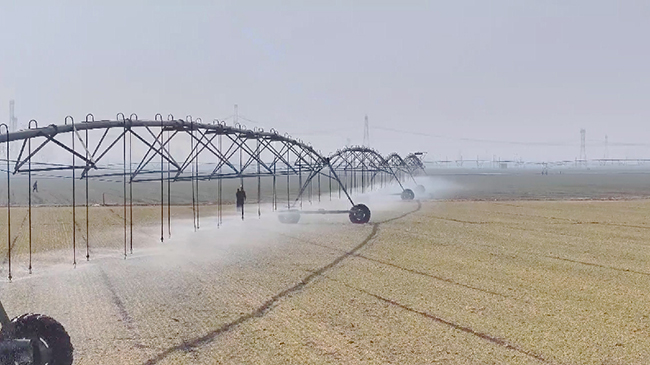Business
 2025/3/10
2025/3/10
 source: International daily
source: International daily
 Print
Print

Agricultural technology and digital control systems are empowering a smarter spring plowing that is now in full swing across China.
In Zhangjiagang City, east China's Jiangsu Province, drones equipped with the Beidou navigation system are carrying out fertilization operations in wheat fields. They can save approximately 30 percent of fertilizer by using the precision variable spraying technology. Their intelligent flight control system can also automatically avoid obstacles and dynamically adjust parameters based on meteorological data, thus improving efficiency by 60 times compared with manual spraying.
"Our daily schedule is basically full. One drone can cover around 200 to 300 mu (about 13 to 20 hectares) of fields in one morning, and we can finish all the fertilizing work in around one or two weeks," said Jiang Sufeng, a local farmer.
Jiaozuo City in Henan Province, central China, introduced a digital public service platform to monitor farmlands. Thanks to the cloud computing and drone remote control technologies, farmers can find out on their mobile phones the moisture and pest damage condition of every single piece of land.
"In the past, we relied on experience to check the fields and see if they were dry. But now, we can receive a text message on our phones reminding us when we need to water the crops. So it saves us both the time and labor, and we don't have to worry about irrigation anymore," said Wang Gang, a farmer in Jiaozuo's Wenxian County.
Dongying City in east China's Shandong Province is also using large-scale agricultural machinery to support spring farming. At a family farm in Guangrao County, a 500-meter-long pivot irrigation system that sprays water evenly is operating autonomously. Previously, irrigating one mu (about 0.07 hectare) of land required around 50 cubic meters of water, but the massive irrigation machine has reduced water usage to a little over 20 cubic meters.
"The traditional method was like flood irrigation, which consumed a lot of water. With manual spraying, one person could only water six or seven mu (about 0.4 to 0.5 hectares) per day. But this new irrigation system can manage 500 to 600 mu (about 33 to 40 hectares) of land in one day. I can control several machines at once without any trouble. It's much easier," said Li Shuguang, a farm owner.
Moreover, this multifunctional system can also assess soil moisture levels with AI-powered monitoring, while simultaneously tracking ground and air temperature, humidity, and pest conditions.





